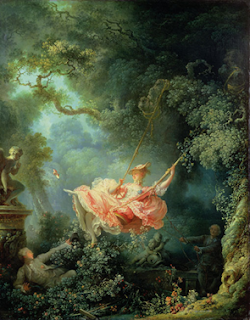Apollo and Daphne; Created by: Giovanni Lorenzo Bernini
Apollo and Daphne; Created by: Giovanni
Lorenzo Bernini
Giovanni Lorenzo Bernini was an architect
and sculpture in Italy. He was considered to be a prodigy, especially during
his early years. Bernini is known in history as the master of baroque in the
17th and the 18th century.” Many
individuals compared him to Michelangelo. Bernini typically did sculptures that
seemed as if it was an action or movement that was frozen. The goal was to be
able to look at the sculpture and see it as moving or what it could be doing.
They were typically subjecting from the biblical or mythological era. A few examples of his work are Aeneas,
Anchises, and Ascanius (1619), The Rape of Proserpina (1621-1622), Apollo and
Daphne (1622-1625), and David (1623-1624). Bernini was one of the aspects
in the influence of royalty, because everyone craved having artwork that has as
much detail and being in constant motion in a stand still state. The more you
have to represent your wealth and power the better.
The sculpture of
Apollo and Daphne was inspired by a true story. The tale of Ovid’s Metamorphosis. I am going to attach the story
of the tale after this paragraph because it is a remarkably interesting read,
that I feel was worth the read.
“Apollo, the god of light and
poetry, teased Cupid about how young he was to handle the bow and arrow,
terming them as very dangerous to a young boy. Apollo’s remarks evoked some
spite in Cupid and as part of his revenge; he pricked the god with his arrow
and made him fall madly in love with a nearby river nymph Daphne. Sadly, Daphne
could not fall in love with Apollo as she had devoted all her life to serving
Diana and had decided to remain a virgin and unmarried.
Seeing the lust in Apollo’s eyes as he pursued her,
she cried out to her father, the river god to rescue her and in turn, he turned
her into a laurel tree. Apollo took home the tree as he declared that if she
was not going to his lover, then she will at least be his tree."
In the
sculpture, Bernini was able to capture the moment that Daphne was transforming.
You can also see the emotions and shock through Apollos fingers. This is where
the motion comes in. In real life, the statue is not moving, but the way the
artist and sculpted and portrayed the sculpture. When you look at the sculpture
though, you see and can imagine the sculpture moving. The sculpture is life size
and was commissioned by: Cardinal Scipione Borghese in 1622 and the sculpture
is very proudly displayed at the Galleria Borghese.
This sculpture
is an amazing art form. Unfortunately, owning the actual thing would probably
not be possible. There is a lot to consider when owning a sculpture, especially
something that big. However, I would love to own at least a picture of it and I
would have a copy of the story printed out and out below it. I love the Greek
Gods and Goddesses and until now I did not realize this was a part of the Baroque
era. Seeing all the lines that got delicately put is remarkable and you can
imagine time consuming. This piece of art is amazing and something I feel
everyone can probably get a different feeling out of it. What do you think of
this masterpiece?
References:
Apollo & Daphne (Bernini),
Partnerships for Sustainable Development, 2010, www.rome.info/bernini/apollo-daphne/.
Apollo and Daphne, 21 June 2021, www.gianlorenzobernini.org/apollo-and-daphne/.
Baroque Art - The Key Artists and Paintings of the
Baroque Period, 3 May 2021,
artincontext.org/baroque-art/#Baroque_Sculpture.




Comments
Post a Comment